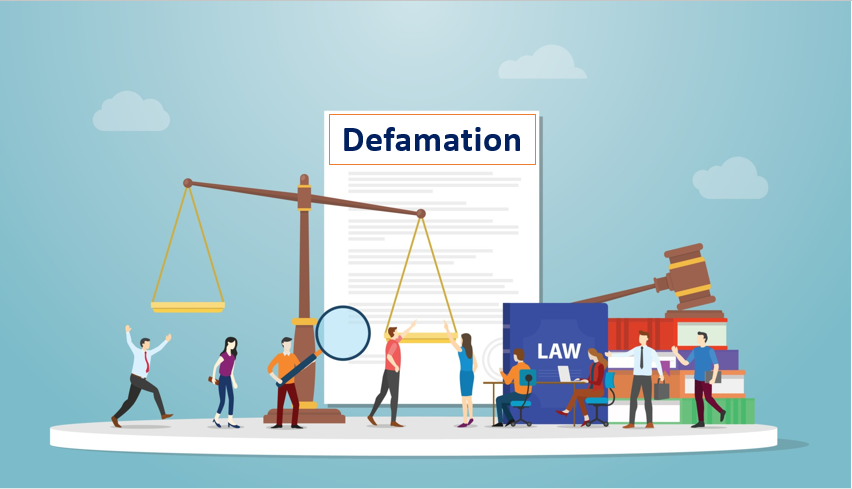Published on 20th February 2025
Authored By: Varun Sharma
Guru Nanak Dev University, Amritsar
Introduction
India’s rapid digital transformation has brought numerous benefits, such as improved connectivity and economic growth. However, this shift has also led to a rise in cybercrimes, challenging existing legal frameworks. This article explores India’s cybercrime legislation, its evolution alongside technological advancements, and assesses its effectiveness through practical insights and landmark case laws.
Evolution of Cybercrime Legislation in India
Information Technology Act, 2000 (IT Act 2000)
The IT Act 2000 is the foundation of India’s cyber law, providing legal recognition for electronic transactions and addressing cyber offenses. It includes provisions related to unauthorized access, data theft, and the transmission of obscene content online.
Amendments and Notable Sections
The IT Act has been amended to address emerging cyber threats:
Amendment Act of 2008: This amendment introduced provisions to tackle identity theft, cyber terrorism, and child pornography, redefining certain offenses and introducing harsher penalties.
Section 66A: Added in 2008, this section criminalized the sending of offensive messages through communication services. However, it was struck down by the Supreme Court in Shreya Singhal v. Union of India (2015) for being unconstitutional and infringing on the right to freedom of speech and expression.
Section 69: Empowers the government to intercept, monitor, or decrypt information through any computer resource in the interest of national security, public order, or to prevent incitement to the commission of any cognizable offense.
Digital Personal Data Protection Act, 2023
In response to growing concerns over data privacy, India enacted the Digital Personal Data Protection Act in 2023. This legislation aims to safeguard personal data, regulate its processing, and establish the rights of individuals concerning their data.
Challenges in Keeping Pace with Technological Advancements
Rapid Technological Evolution
The swift pace of technological innovation often outstrips legislative processes, leading to regulatory gaps. Emerging technologies such as artificial intelligence, blockchain, and the Internet of Things introduce complexities that existing laws may not adequately address.
Jurisdictional Issues
Cybercrimes frequently transcend national boundaries, complicating jurisdictional authority and enforcement. The global nature of the internet allows perpetrators to exploit legal disparities between countries, making international cooperation essential yet challenging.
Enforcement and Implementation
Despite robust legislative frameworks, enforcement remains a significant challenge due to limited resources, lack of technical expertise among law enforcement agencies, and the sheer volume of cyber incidents.
Landmark Case Laws in Indian Cyber Jurisprudence
Shreya Singhal v. Union of India (2015)
This landmark judgment led to the striking down of Section 66A of the IT Act, which was deemed unconstitutional for violating the right to freedom of speech and expression under Article 19(1)(a) of the Constitution.
Suhas Katti v. Tamil Nadu (2004)
In this case, the accused was convicted under Section 67 of the IT Act for posting obscene messages about a woman in a Yahoo message group. This was one of the first cases in India where a conviction was secured for cyber harassment, highlighting the applicability of cyber laws in protecting individuals from online abuse.
Tamil Nadu v. Suhas Katti (2004)
This case involved the posting of obscene messages on the internet, leading to the conviction of the accused under Section 67 of the IT Act. It underscored the effectiveness of cyber laws in addressing online defamation and harassment.
Practical Challenges in Cybercrime Legislation
Outdated Legislation
One of the most significant challenges to Indian law in addressing cybercrime is the outdated nature of existing legislation. The primary law governing cybercrime in India is the Information Technology Act, 2000 (IT Act), which was last amended in 2008. While the IT Act was a pioneering piece of legislation at its inception, it has not kept pace with the rapid advancements in technology and the evolving nature of cyber threats.
Lack of International Cooperation
The lack of a common legal framework to handle international cyber offenses acts as a significant barrier to the effective adjudication of such cases. Criminals committing cyber crimes use encryption tools which help them to conceal the information and not get caught by law enforcement authorities. The utilization of the Darknet further complicates investigations by allowing criminals to mask their identities.
Inadequate Procedural Laws
The main general framework available to all cybercrime investigations is the Indian Information Technology Act, 2000 as amended in 2008, and the Code of Criminal Procedure, 1973 (Cr.PC). However, inadequacies in dealing with cross-border cybercrimes, jurisdiction issues, and the lack of international cooperation further compound the challenges in effectively addressing cyber threats.
Recent Developments and Initiatives
National Registry of Suspected Cyber Criminals
In September 2024, India announced plans to establish a nationwide registry of suspected cyber criminals and deploy approximately 5,000 “cyber commandos” over the next five years. This initiative aims to enhance cybersecurity efforts by creating a specialized workforce to combat cyber threats.
India’s Achievement in Global Cybersecurity Index
India has marked a significant milestone in its cybersecurity efforts by achieving top Tier, i.e., Tier 1 status in the Global Cybersecurity Index (GCI) 2024. This achievement reflects the country’s commitment to strengthening its cybersecurity infrastructure and regulatory framework.
Jan Vishwas (Amendment of Provisions) Act, 2023
The Jan Vishwas Act aims to decriminalize minor offenses and promote ease of doing business. It includes amendments to various laws, including the IT Act, to reduce compliance burdens and encourage self-regulation among businesses.
Emerging Threats and Vulnerabilities
The cybersecurity landscape in India has evolved dramatically, with the country grappling with an increasing volume and sophistication of cyber threats. The demand for strong cyber defense measures grows, especially in countries such as India, where the rate of digitalization far exceeds cybersecurity developments.
Recent Developments in Cybercrime Legislation
Bharatiya Nyaya Sanhita, 2023
In December 2023, the Indian Parliament enacted the Bharatiya Nyaya Sanhita, 2023, a comprehensive criminal code aimed at modernizing and streamlining the criminal justice system. This code includes provisions addressing cybercrimes, enhancing penalties for offenses such as cyber terrorism, data theft, and online fraud. The legislation also introduces measures for the electronic registration of First Information Reports (FIRs) and mandates virtual recording of seized property, reflecting the integration of digital processes in law enforcement.
National Registry of Suspected Cyber Criminals
In September 2024, India announced plans to establish a nationwide registry of suspected cyber criminals. This initiative aims to enhance the tracking and monitoring of individuals involved in cyber offenses, facilitating more effective law enforcement responses. Additionally, the government plans to deploy approximately 5,000 “cyber commandos” over the next five years. These experts will collaborate with police and regional authorities to target and crack down on cybercrime.
Digital Personal Data Protection Act, 2023
In response to growing concerns over data privacy, India enacted the Digital Personal Data Protection Act in 2023. This legislation aims to safeguard personal data, regulate its processing, and establish the rights of individuals concerning their data. It introduces stringent requirements for data collection, storage, and processing, and imposes significant penalties for non-compliance.
Amendments to the Information Technology Act, 2000
The Information Technology Act, 2000, has undergone several amendments to address emerging cyber threats. Notably, Section 65 of the IT Act criminalizes the tampering of computer source documents, with penalties including imprisonment for up to three years and fines up to ₹2 lakh.
Supreme Court Ruling on Cyber Attacks and Data Thefts
In a special petition filed in 2021, the Supreme Court of India ruled that cyber attacks and data thefts are crimes under both the Information Technology Act, 2000, and the Indian Penal Code (IPC). This ruling underscores the legal recognition of cybercrimes and the applicability of existing laws in addressing such offenses.
Challenges and Future Directions
Despite these legislative advancements, challenges remain in effectively combating cybercrime. The rapid pace of technological innovation often outstrips legislative processes, leading to regulatory gaps. Emerging technologies such as artificial intelligence, blockchain, and the Internet of Things introduce complexities that existing laws may not adequately address. Additionally, the global nature of cybercrimes complicates jurisdictional authority and enforcement, necessitating enhanced international cooperation. To address these challenges, India must continue to update its legal frameworks, invest in capacity building for law enforcement agencies, and foster international collaboration to effectively combat cybercrime.
Conclusion
India’s commitment to strengthening its cybercrime legislation is evident through significant legislative measures and strategic initiatives. The Information Technology Act of 2000, along with its subsequent amendments, has been instrumental in addressing various cyber offenses. The enactment of the Digital Personal Data Protection Act in 2023 further underscores India’s dedication to safeguarding personal data in an increasingly digital landscape.
However, the dynamic nature of technology presents ongoing challenges. Emerging technologies such as artificial intelligence, blockchain, and the Internet of Things introduce complexities that existing laws may not fully encompass. Jurisdictional issues, especially with cybercrimes transcending national boundaries, and enforcement challenges due to limited resources and technical expertise among law enforcement agencies, persist as significant hurdles.
In conclusion, while India has made commendable strides in developing and updating its cybercrime legislation, continuous efforts are essential to keep pace with technological advancements. A dynamic and adaptable legal framework, coupled with robust enforcement mechanisms and international cooperation, is crucial to effectively combat the evolving landscape of cyber threats.


